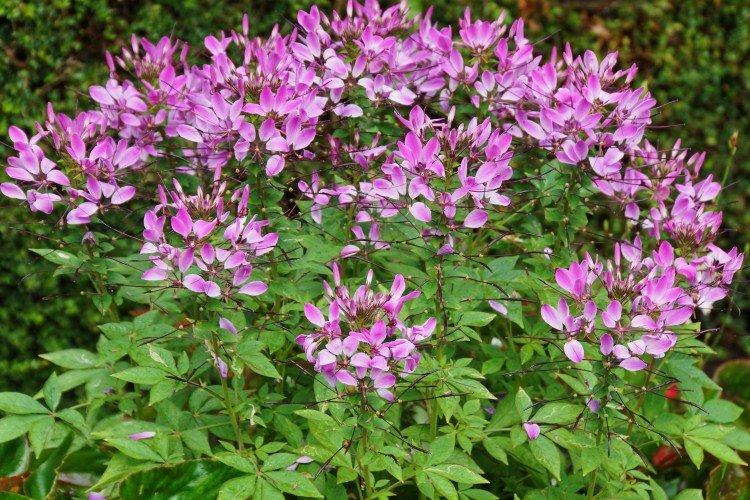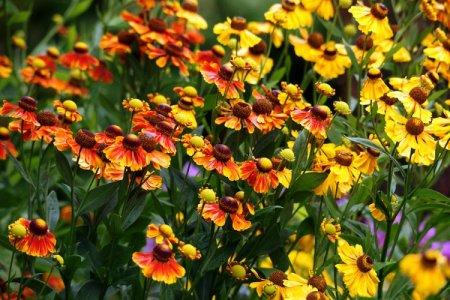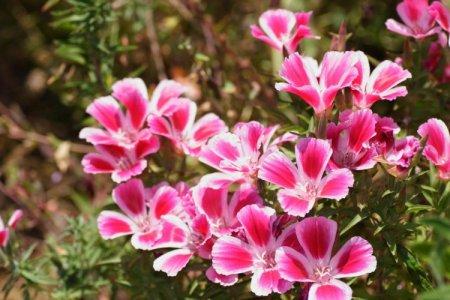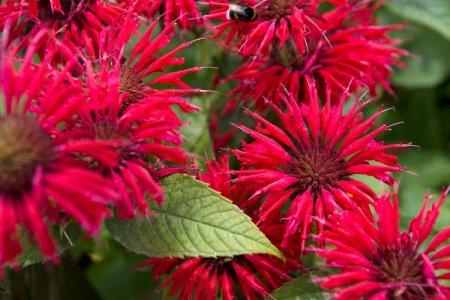
Cleoma would unconditionally enter the top garden flowers with original inflorescences. Its exotic origin is noticeable in everything, but at the same time it is well adapted to the conditions of middle latitudes. Here's what else interested gardeners need to know about glue!
general information
The powerful strong rhizome of cleoma allows it to easily adapt to any conditions. Depending on the species, the height of a strong straight stem reaches 1.5 m. Gradually, it lignifies from below and begins to branch at the top.
Cleoma has beautiful lobed leaves of 5-7 parts on long petioles. Against their bright light green background, white, purple or pink inflorescences 20 cm in diameter look even better. Long "antennae" are filamentous stamens.
Cleoma blooms in summer, and gradually its inflorescences stretch out. It has a strong and pungent scent that attracts beneficial insects to the garden. It is interesting that in native latitudes it is also liked by bats, who are not indifferent to nectar.

Types of cleoma
Despite the fact that the number of natural varieties of cleoma exceeds a hundred, only two species are cultivated in the gardens. And both of them come from the forests of South America.
Formally, they differ only in shade, therefore, for simplicity, they are combined into one category - prickly cleoma. We advise you to pay attention to the varieties Pink and Violet Queen, Helen Campbell, Golden Sparkler.

Cleoma care
Cleoma prefers warm or temperate climates, so in most regions of Russia there are no problems with its cultivation. Especially now, with the current variety of adapted garden forms!
Temperature and lighting
Tropical varieties of cleoma are sensitive to frost and frost. They prefer sunny areas and bloom weaker in partial shade. In addition, low temperatures, combined with a lack of light, inevitably lead to fungus.

Watering
Watering is needed, but moderate, because cleoma tolerates drought better than high humidity. During the main part of the season, natural precipitation is enough for it. During a drought, we advise you to water the bushes rarely, but abundantly.

The soil
The soil for cleoma should be balanced - moderately loose, moderately moist, moderately nutritious and neutral. Too fertile soil is the main reason that the plant bushes well, but does not bloom well.

Fertilizers and feeding
From the beginning of active growth to flowering, the glue is fed with mineral fertilizers every 2 weeks. We advise you not to abuse nitrogen, because the leaves will grow to the detriment of flowering. If the plant is obviously lacking in nutrients, use a spray mixture.

Support
Tall varieties of cleoma definitely need support, otherwise the nearest strong wind will simply overwhelm them. Instead of ladders, we advise you to stretch thin lines between the stakes at the corners of the flower bed.

Pruning
The peduncles are cut off immediately after flowering. The fact is that then fruit-pods are quickly formed on them, which are easily opened. Because of this, the cleoma multiplies too intensively by self-seeding.

Wintering
Cleoma does not hibernate in our latitudes, so no preparation is needed. Just remove the remains of the plant closer to the onset of frost. Immediately after that, you can plant the seeds in open ground and cover with spruce branches, so that later you can avoid transplanting seedlings. But this method is only suitable for warm regions.

Planting and reproduction of cleoma
In Russia, glue is grown exclusively from seeds, and it is recommended to do this through seedlings. The seeds must be fresh because they lose their germination. In early March, they are sown in a mixture of peat and sand and covered with foil.
Cleoma takes a long time to grow, so sometimes flower growers specially arrange the temperature difference: in the daytime in the sun, and at night in the refrigerator. As a result, in about a month, the first sprouted shoots will appear. When several leaves are formed, plant them in peat pots, deepening right up to these leaves.
At the end of May, after the frost, plant the glue in the garden, but remember that at this age it is very sensitive to temperature changes. The distance between the bushes should be 30-80 cm, depending on the size of the variety. For quick rooting, we recommend using humate when watering.

Pest and disease control
The pungent smell safely scares away pests from cleoma and its neighbors. She also hardly suffers from diseases, especially with proper care. And when a fungus appears, use fungicides and adjust the watering regime.

Cleoma - photo
Fancy cleoma inflorescences look original both up close and at a distance. It's easy to look at them even for an hour, and you will never find similar ones!





























